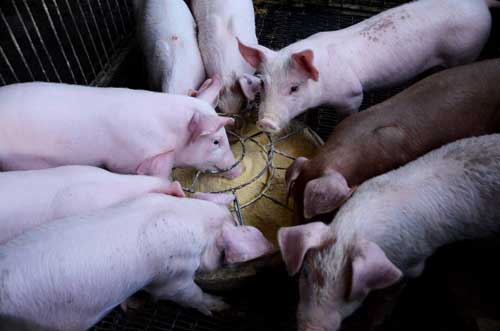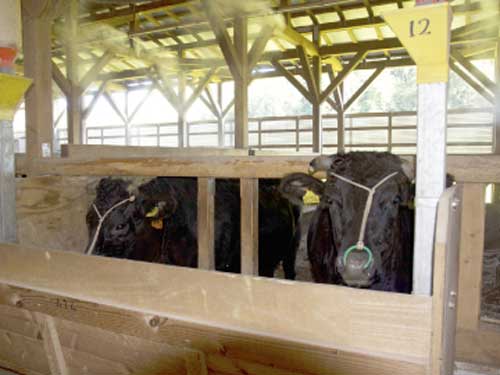Livestock
Semi-Dry Fog air cooling for Swinery & Beef barn

Process
Issues in meat farms, swinery and beef barn during warm weather
- Heat stress / fatigue
- Loss of appetite which generates a loss of weight in the animal
- Animal losses
- Lower productivity (lower quality and quantity of meat)
- Lower conception rate due to hot environment

Swinery
Solution: Semi-Dry Fog air cooling systems
Cooling down the barns without causing additional stress to the animals is important. Our air cooling systems cool effectively without wetting the animals or the ground by using the evaporative cooling effect of very fine “Semi-Dry Fog®”. The animals are cooled down by reducing the surrounding air temperature with fog. It also keeps the barns very hygienic.
The installation of the system is adapted to each barn style.
Example of Systems / Products used for this solution
COOLJetter® Dome
Hydraulic nozzles: KBN series KB series
Solutions
Benefits
- Less stress to the animals thanks to the cooling effect without wetting (temperature decrease of 5 degrees on average) of the Semi-Dry Fog air cooling
- Recovery of appetite
- Higher quality with a better taste of meat (as meat cows and pigs stay healthier)
- Reduction of animal losses in summer by preventing perinatal diseases and heatstroke
- Reduction of the number of animals under medical treatment
- Improved conception rates increasing the revenue

LYOHM System® installed in a beef barn in Japan
Advantages of the solution
- Easy to install inside and in existing barns
- Easy to control and keep the most comfortable environment for animals
Applications
- Cooling right above the animals, from along the ceiling
- Other applications: humidification, indoor cooling, outdoor cooling
Related articles
The cooling effect without wetting of the Semi-Dry Fog air cooling is a key advantage of this solution. It will avoid additional stress on the animals, which will have a direct positive consequence on the quality of the product. That is why it is important to understand how we measure the water droplets so that we can assure our solution doesn’t wet the animals and the barns.
Here are two articles we’ve covered about the water droplets and why the size is important:
